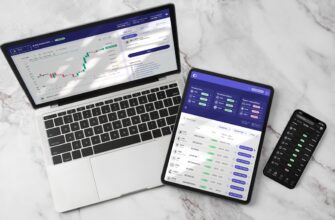- Introduction: The Rising Power of P2P Rates
- What Exactly is a P2P Rate?
- How P2P Lending Rates Work in Practice
- Key Factors Influencing Your P2P Rate
- Top 5 Benefits of Competitive P2P Rates
- Understanding P2P Rate Risks
- How to Secure the Best P2P Rates: 7 Pro Tips
- Frequently Asked Questions (FAQs) about P2P Rates
- Are P2P rates fixed or variable?
- How do P2P rates compare to bank loan rates?
- Can P2P rates change after loan funding?
- Are P2P rates taxable?
- What’s the minimum credit score for competitive P2P rates?
- Conclusion: Mastering the P2P Rate Landscape
Introduction: The Rising Power of P2P Rates
In today’s digital finance landscape, P2P rates (peer-to-peer lending rates) are revolutionizing how people borrow and invest money. These rates represent the interest charged on loans facilitated directly between individuals through online platforms, bypassing traditional banks. With potential returns often exceeding savings accounts and borrowing costs lower than credit cards, understanding P2P rates is crucial for savvy financial decision-making. This guide breaks down everything you need to know about peer-to-peer lending rates.
What Exactly is a P2P Rate?
A P2P rate is the interest percentage applied to loans arranged through peer-to-peer lending platforms like LendingClub, Prosper, or Funding Circle. Unlike banks that set rates based on overhead costs and profit margins, P2P rates are determined by market dynamics: investors bid to fund loans at rates they find attractive, while borrowers seek affordable financing. This creates a competitive marketplace where:
- Borrowers access funds at potentially lower rates than traditional banks
- Investors earn interest often 2-3x higher than savings accounts
- Platforms facilitate transactions for a service fee
How P2P Lending Rates Work in Practice
P2P rates operate through a three-stage process:
- Borrower Application: Individuals apply for loans, undergoing credit checks and risk assessments.
- Rate Determination: Platforms assign interest rates based on creditworthiness, loan amount, and term. Higher-risk borrowers receive higher P2P rates.
- Investor Participation: Investors browse loan listings and fund portions of loans at the stated rates, creating a diversified portfolio.
Interest accrues monthly, with borrowers making fixed payments until the loan matures (typically 3-5 years).
Key Factors Influencing Your P2P Rate
Multiple variables impact the P2P rate you’ll receive or earn:
- Credit Score: The #1 determinant – scores above 700 secure the lowest rates
- Loan Purpose: Debt consolidation loans often have better rates than business loans
- Loan Term: Shorter terms (1-3 years) typically have lower rates than longer terms
- Economic Climate: Central bank rates indirectly affect P2P rate trends
- Platform Fees: Some charge 1-6% origination fees, effectively increasing borrower costs
Top 5 Benefits of Competitive P2P Rates
Why are P2P rates gaining massive popularity?
- Higher Investor Returns: Average returns of 5-10% vs. 0.5% in traditional savings
- Lower Borrower Costs: Rates from 6-36% compared to credit cards at 16-25% APR
- Streamlined Processes: Online applications approved in days, not weeks
- Transparent Pricing: No hidden fees – rates and terms are clearly disclosed
- Credit Building: On-time payments report to major credit bureaus
Understanding P2P Rate Risks
While attractive, P2P rates carry unique considerations:
- Default Risk: Borrowers may fail to repay, causing investor losses
- Liquidity Limits: Investments can’t typically be withdrawn before loan maturity
- Platform Risk: Service failures could disrupt transactions
- Rate Volatility: Economic shifts may alter returns over time
- Regulatory Uncertainty: Evolving laws may impact operations
How to Secure the Best P2P Rates: 7 Pro Tips
- Boost your credit score before applying (aim for 720+)
- Compare rates across 3+ platforms like Upstart, SoFi, and Mintos
- Opt for shorter loan terms when possible
- Investors: Diversify across 100+ loans to mitigate defaults
- Borrowers: Provide complete income documentation
- Monitor seasonal promotions offering discounted origination fees
- Use P2P rate comparison tools on NerdWallet or Bankrate
Frequently Asked Questions (FAQs) about P2P Rates
Are P2P rates fixed or variable?
Most P2P loans offer fixed rates, providing predictable payments. Variable-rate options are rare in mainstream platforms.
How do P2P rates compare to bank loan rates?
Borrowers with excellent credit may find similar rates, but P2P often beats banks for those with fair credit. Investors consistently earn more through P2P rates than savings products.
Can P2P rates change after loan funding?
No. Once funded, fixed P2P rates remain constant. Only variable-rate loans (uncommon in P2P) could adjust.
Are P2P rates taxable?
Yes. Investors must report interest income as taxable earnings. Borrowers cannot deduct interest unless for business loans or qualifying education expenses.
What’s the minimum credit score for competitive P2P rates?
Most platforms require 600+ for approval, but scores of 680+ secure the best P2P rates. Some accept lower scores with higher rates.
Conclusion: Mastering the P2P Rate Landscape
P2P rates represent a dynamic shift in financial services, offering tangible benefits for both borrowers seeking affordable credit and investors chasing yield. By understanding how these rates function, what influences them, and how to navigate associated risks, you can harness their potential effectively. As the market matures, P2P rates continue to democratize finance – just remember to compare platforms, read fine print, and align choices with your financial goals. Whether you’re paying or earning interest, smart P2P rate management could transform your economic future.








